1. Harkness LM, Ashton AW, Burgess JK. Asthma is not only an airway disease, but also a vascular disease. Pharmacol Ther. 2015; 148:17–33. PMID:
25460035.

2. Global Initiative for Asthma. Global strategy for asthma management and prevention 2014 [Internet]. [place unknown]: Global Initiative for Asthma;2014. cited 2016 Jun 3. Available from:
http://www.ginasthma.org/.
3. Park HW, Tantisira KG. Genetic signatures of asthma exacerbation. Allergy Asthma Immunol Res. 2017; 9:191–199. PMID:
28293925.

4. Bossé Y, Paré PD, Seow CY. Airway wall remodeling in asthma: from the epithelial layer to the adventitia. Curr Allergy Asthma Rep. 2008; 8:357–366. PMID:
18606090.

5. Benayoun L, Druilhe A, Dombret MC, Aubier M, Pretolani M. Airway structural alterations selectively associated with severe asthma. Am J Respir Crit Care Med. 2003; 167:1360–1368. PMID:
12531777.

6. Ebina M, Yaegashi H, Chiba R, Takahashi T, Motomiya M, Tanemura M. Hyperreactive site in the airway tree of asthmatic patients revealed by thickening of bronchial muscles. A morphometric study. Am Rev Respir Dis. 1990; 141:1327–1332. PMID:
2187387.

7. Wilson J. The bronchial microcirculation in asthma. Clin Exp Allergy. 2000; 30(Suppl 1):51–53. PMID:
10849476.

8. Davies DE. Epithelial barrier function and immunity in asthma. Ann Am Thorac Soc. 2014; 11(Suppl 5):S244–S251. PMID:
25525727.

9. Park CS, Kim YY, Kang SY. Collection between RAST and skin test for inhalant offending allergens. Allergy. 1983; 3:1–9.
10. Adams KF, Schatzkin A, Harris TB, Kipnis V, Mouw T, Ballard-Barbash R, et al. Overweight, obesity, and mortality in a large prospective cohort of persons 50 to 71 years old. N Engl J Med. 2006; 355:763–778. PMID:
16926275.

11. Islam SA, Luster AD. T cell homing to epithelial barriers in allergic disease. Nat Med. 2012; 18:705–715. PMID:
22561834.

12. Cookson W. The immunogenetics of asthma and eczema: a new focus on the epithelium. Nat Rev Immunol. 2004; 4:978–988. PMID:
15573132.

13. Eiwegger T, Akdis CA. IL-33 links tissue cells, dendritic cells and Th2 cell development in a mouse model of asthma. Eur J Immunol. 2011; 41:1535–1538. PMID:
21618506.

14. Hammad H, Chieppa M, Perros F, Willart MA, Germain RN, Lambrecht BN. House dust mite allergen induces asthma via Toll-like receptor 4 triggering of airway structural cells. Nat Med. 2009; 15:410–416. PMID:
19330007.

15. Georas SN, Rezaee F. Epithelial barrier function: at the front line of asthma immunology and allergic airway inflammation. J Allergy Clin Immunol. 2014; 134:509–520. PMID:
25085341.

16. Schleimer RP, Kato A, Kern R, Kuperman D, Avila PC. Epithelium: at the interface of innate and adaptive immune responses. J Allergy Clin Immunol. 2007; 120:1279–1284. PMID:
17949801.
17. Tsukita S, Furuse M, Itoh M. Multifunctional strands in tight junctions. Nat Rev Mol Cell Biol. 2001; 2:285–293. PMID:
11283726.

18. Chen X, Gumbiner BM. Crosstalk between different adhesion molecules. Curr Opin Cell Biol. 2006; 18:572–578. PMID:
16859906.

19. Reijula JP, Reijula KE. The impact of Finnish tobacco legislation on restaurant workers’ exposure to tobacco smoke at work. Scand J Public Health. 2010; 38:724–730. PMID:
20688793.

20. Soini Y. Claudins in lung diseases. Respir Res. 2011; 12:70. PMID:
21619599.

21. Kage H, Flodby P, Gao D, Kim YH, Marconett CN, DeMaio L, et al. Claudin 4 knockout mice: normal physiological phenotype with increased susceptibility to lung injury. Am J Physiol Lung Cell Mol Physiol. 2014; 307:L524–L536. PMID:
25106430.

22. Koval M. Claudin heterogeneity and control of lung tight junctions. Annu Rev Physiol. 2013; 75:551–567. PMID:
23072447.

23. Jin W, Rong L, Liu Y, Song Y, Li Y, Pan J. Increased claudin-3, -4 and -18 levels in bronchoalveolar lavage fluid reflect severity of acute lung injury. Respirology. 2013; 18:643–651. PMID:
23253121.

24. Lappi-Blanco E, Lehtonen ST, Sormunen R, Merikallio HM, Soini Y, Kaarteenaho RL. Divergence of tight and adherens junction factors in alveolar epithelium in pulmonary fibrosis. Hum Pathol. 2013; 44:895–907. PMID:
23253490.

25. Moon KY, Lee PH, Kim BG, Park CS, Leikauf GD, Jang AS. Claudin 5 in a murine model of allergic asthma: its implication and response to steroid treatment. J Allergy Clin Immunol. 2015; 136:1694–1696.e5. PMID:
26409663.

26. Reddel HK, Bateman ED, Becker A, Boulet LP, Cruz AA, Drazen JM, et al. A summary of the new GINA strategy: a roadmap to asthma control. Eur Respir J. 2015; 46:622–639. PMID:
26206872.

27. Hammad H, Lambrecht BN. Barrier epithelial cells and the control of type 2 immunity. Immunity. 2015; 43:29–40. PMID:
26200011.

28. Schlingmann B, Molina SA, Koval M. Claudins: gatekeepers of lung epithelial function. Semin Cell Dev Biol. 2015; 42:47–57. PMID:
25951797.

29. Chae MC, Park CK, Keum DY, Hwang I, Kwon KY, Jang BC. Prognostic significance of claudin 4 in completely resected adenocarcinoma of the lung. Korean J Thorac Cardiovasc Surg. 2014; 47:262–268. PMID:
25207224.

30. Wan H, Winton HL, Soeller C, Tovey ER, Gruenert DC, Thompson PJ, et al. Der p1 facilitates transepithelial allergen delivery by disruption of tight junctions. J Clin Invest. 1999; 104:123–133. PMID:
10393706.
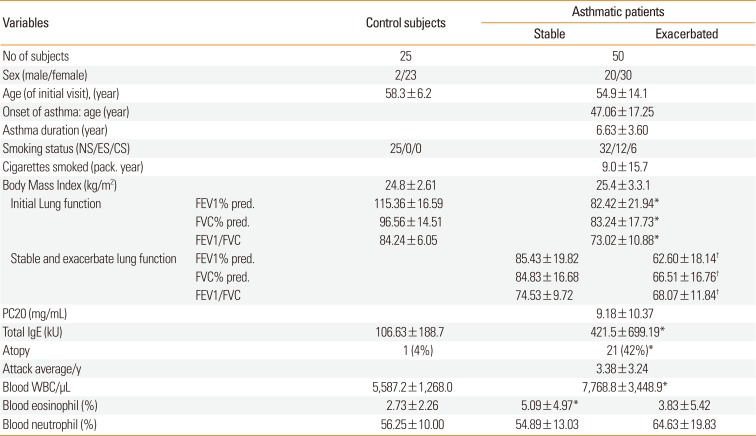
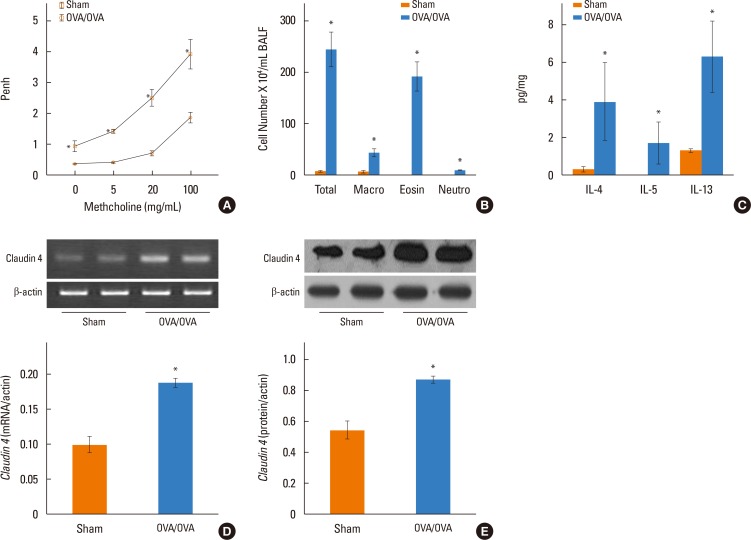

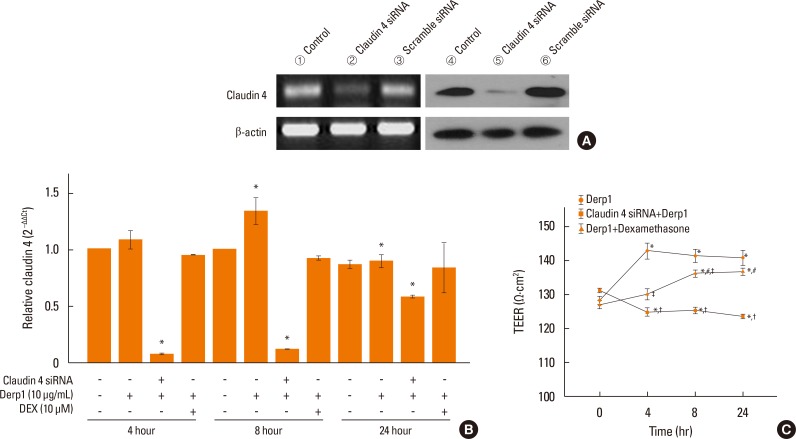





 PDF
PDF ePub
ePub Citation
Citation Print
Print


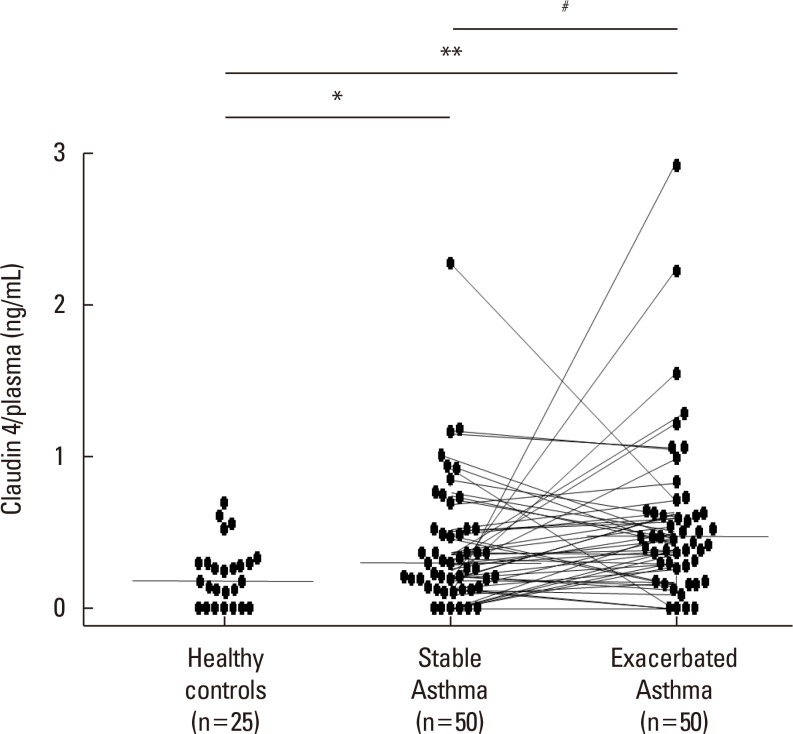
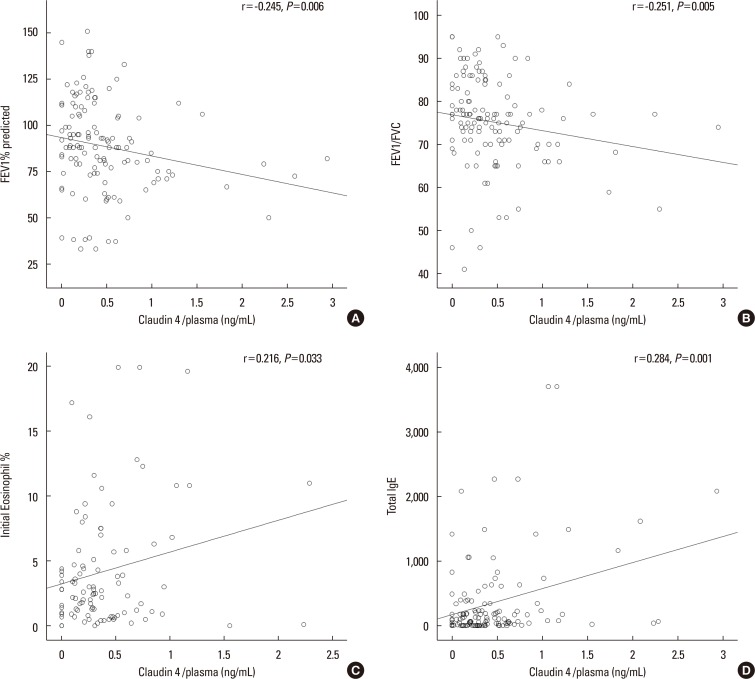
 XML Download
XML Download